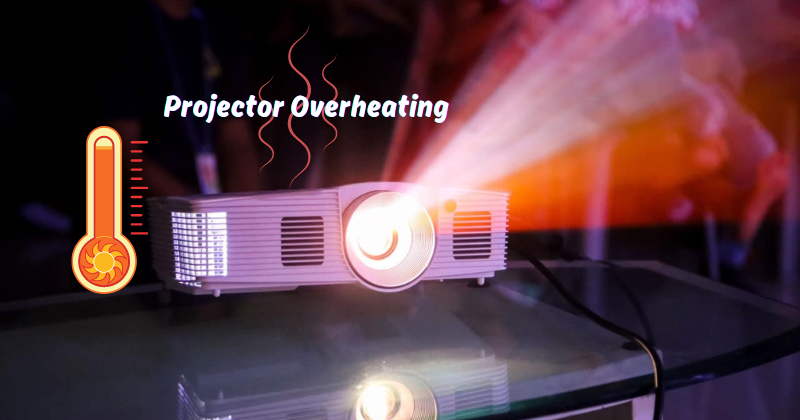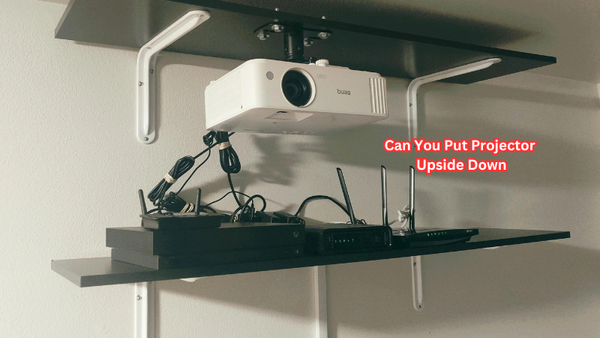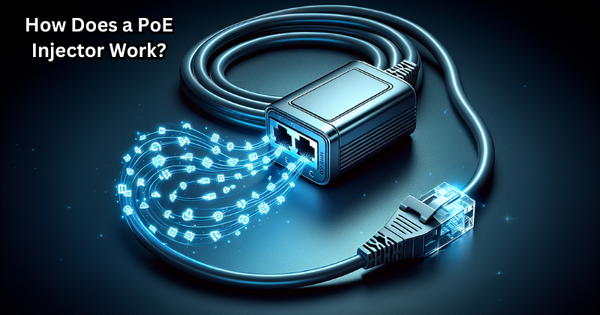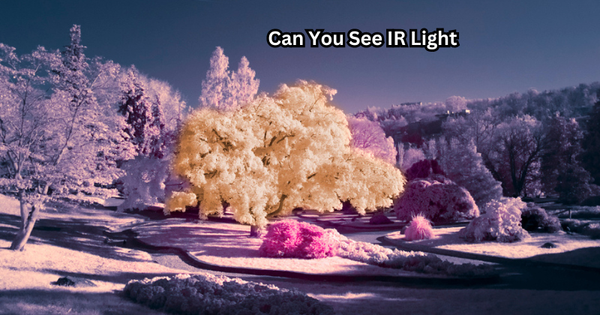Projectors are valuable for presentations, movie nights, and immersive gaming experiences. However, like any electronic device, projectors can encounter problems, and one common issue is overheating. When a projector overheats, it can lead to performance issues, reduced lifespan, and even potential damage.
Overheating occurs when the internal components generate excessive heat and cannot dissipate it effectively. This can be caused by prolonged usage, inadequate ventilation, or clogged air filters. Recognizing the signs of an overheating projector, understanding the causes, and implementing preventive measures are essential for maintaining optimal projector performance.
This guide will explore the reasons behind projector overheating and provide practical tips to prevent and address this issue, ensuring smooth and uninterrupted projection experiences. We will also discuss the importance of regular maintenance and how it can extend the lifespan of your projector.
Signs of an Overheating Projector
The first step in addressing an overheating projector is to recognize the signs. Some common indications include:
- The projector suddenly shuts down
- The image quality becomes distorted or pixelated
- Unusual noises such as fan whirring or grinding sounds
- The projector becomes too hot to touch
If you experience any of these signs, it is crucial to take immediate action to prevent further damage. Ignoring the problem can lead to permanent damage and costly repairs.
Causes of Projector Overheating
Understanding the root cause of an overheating projector is essential in preventing future occurrences. Some main reasons for projector overheating include:
Clogged or Damaged Air Filter:
Air filters are vital in keeping projectors cool by preventing dust and debris from entering the internal components. Over time, air filters can become clogged with dust, inhibiting proper airflow and causing overheating. Clogged air filters can also damage the internal components, which can be expensive to replace.
Clean the air filters, as a clogged filter can restrict airflow and cause overheating. It is essential to regularly clean or replace the air filter according to the manufacturer's instructions.
Inadequate Ventilation:
Projectors require adequate ventilation to dissipate heat effectively. If the projector is placed in a small, enclosed space, it can trap heat and affect performance. Proper ventilation is crucial, especially for high-powered projectors that generate more heat.
Ensure there is enough open space around the projector, and avoid placing it in areas with poor airflow, such as near a heating vent or direct sunlight.
Prolonged Usage:
Like any electronic device, projectors can overheat when used for extended periods. This issue is common in older projectors or those with inadequate cooling systems. Excellent air circulation is crucial for projectors; when the internal components cannot cool down, it can lead to overheating. Taking breaks and turning off the projector when not in use is recommended, allowing it to cool down.
Fan Locked Issue:
Another common cause of projector overheating is a malfunctioning fan. Fans play a crucial role in cooling down the internal components by circulating cool air. If the fan becomes damaged or stuck, it can affect airflow and lead to overheating. In some cases, the fan may also become noisy or produce unusual sounds. Compressed air cans can be used to remove dust from the fan and ensure it is running smoothly.
If you suspect an issue with the fan, it is best to contact the manufacturer or a professional technician for assistance.
External Heat Sources:
External heat sources can also contribute to projector overheating. Placing the projector near other devices that generate heat, such as a gaming console or router they also produce hot air, can make projector overheat quickly. Additionally, using the projector in a hot and humid environment can also lead to overheating.
High Altitude Location:
Projectors are designed to operate at a specific altitude, and using them at higher altitudes can affect their performance. The air is thinner at higher altitudes, which means it cannot dissipate heat as effectively. As a result, projectors used in high-altitude locations may experience overheating issues.
If you live or will be using the projector in a high-altitude area, be sure to check the manufacturer's specifications and choose a model suitable for that environment.
Internal Damage & Improper Power Supply:
Internal damage to the projector's components can also lead to overheating. This can occur due to physical damage or wear and tear over time. The projector is overheating due to internal temperature sensors not working properly, which can also lead to overheating.
Additionally, using the wrong power supply or voltage can cause the projector to overheat. Projection technology always runs on high voltage, and even a slight difference can cause issues. Fresh, clean power and stable voltage supplies are crucial for the optimal performance of a projector. It is essential to handle and store the projector with care and always use a proper power supply according to the manufacturer's specifications.
These are some of the main causes of projector overheating. By identifying the cause, you can take preventive measures to ensure your projector operates at its best.
Additional Causes for Overheating
There are a few other factors that can contribute to projector overheating, including:
- Lack of maintenance: Regular cleaning and upkeep of the projector is essential in preventing overheating issues. Dust and debris buildup can block airflow and affect the performance of internal components.
- Aging projectors: As projectors age, their cooling systems may become less effective, leading to overheating. It is crucial to keep up with regular maintenance and consider upgrading to a newer model if the projector is showing signs of wear and tear.
- High ambient temperatures: Using the projector in extremely hot environments can make it difficult for the cooling system to regulate temperature effectively, leading to overheating. Avoid using projectors in areas with high ambient temperatures or take precautions such as using additional fans for air supply.
- Projector lamp: Projector lamps are the light engine of a projector and produce heat during usage. Old lamps generate more heat than new ones, which can contribute to overheating. Be sure to replace the lamp according to the manufacturer's instructions and avoid using old or damaged lamps.
By taking the necessary steps to prevent these causes, you can keep your projector functioning at its best and avoid any potential damage or issues. Always refer to the manufacturer's instructions for proper cleaning and maintenance techniques, and seek professional help if needed.
Tips to Prevent Projectors from Overheating
- Always follow the manufacturer's instructions for the maintenance and cleaning of the projector.
- Ensure proper ventilation by keeping the area around the projector clear and avoiding placing it in enclosed spaces.
- Take breaks and turn off the projector when not in use to allow it to cool down.
- Regularly check and clean the fan to ensure proper airflow.
- Avoid using old or damaged lamps and replace them according to the manufacturer's instructions.
- Protect the projector from external heat sources such as gaming consoles or routers.
- Choose a suitable model for high-altitude locations if necessary.
- Use a stable power supply and avoid using incorrect voltage.
By following these tips, you can ensure that your projector operates at its optimal performance and prolong its lifespan. Always take necessary precautions and promptly address any issues to avoid potential damage. Start enjoying your presentations, movies, and games without worrying about the projector overheating.
Red/Orange Blinking Temperature Lights When Projectors are Overheated
When a projector is overheating, it will often have red or orange blinking temperature lights. This indicates that the projector's internal temperature has exceeded its operating limits. In such cases, it is essential to turn off the projector immediately and allow it to cool down before turning it on again.
If you continue to experience overheating issues despite taking preventive measures, contact the manufacturer or a professional technician for assistance. Remember, addressing these issues before they cause further damage to your projector is always better.
FAQs
Do projectors overheat easily?
Projectors can overheat easily if improperly maintained or used in environments with high ambient temperatures. Preventive measures such as proper ventilation and regular maintenance can help prevent overheating.
How long can a projector stay on before overheating?
The time a projector can stay on before overheating varies depending on factors such as ambient temperature and usage patterns. It is always best to follow the manufacturer's instructions and take breaks when necessary.
What is the lifespan of a projector?
The lifespan of a projector depends on various factors, such as usage, maintenance, and environmental conditions. With proper care, projectors can last anywhere between 2000-5000 hours. Upgrading to a newer model or replacing old lamps can also help prolong the lifespan of a projector.
What happens if the projector overheats?
If a projector overheats, it can cause damage to internal components and affect its overall performance. Sometimes, it may even lead to the projector shutting down or not turning on. It is important to address overheating issues promptly to avoid any potential damage. Use air vents, fans, or coolers to lower the projector's temperature.
Conclusion
In conclusion, projector overheating is a common issue that can disrupt the functionality and longevity of your device. By understanding the causes and implementing preventive measures, you can minimize the risk of overheating and ensure optimal performance.
Regularly cleaning the air filters, providing adequate ventilation, and avoiding prolonged usage are simple yet effective ways to prevent overheating. Additionally, monitoring the projector's temperature and using cooling accessories, such as external fans or heat sinks, can help dissipate excess heat and maintain a stable operating temperature.
If you encounter overheating issues despite preventive measures, addressing them promptly is crucial. This may involve contacting the manufacturer for support, seeking professional assistance, or considering alternative cooling solutions.
Remember, preventing projector overheating protects your investment and enhances your viewing experience. By maintaining an optimal temperature, you can enjoy crystal-clear images, vibrant colors, and reliable performance from your projector for years to come.





